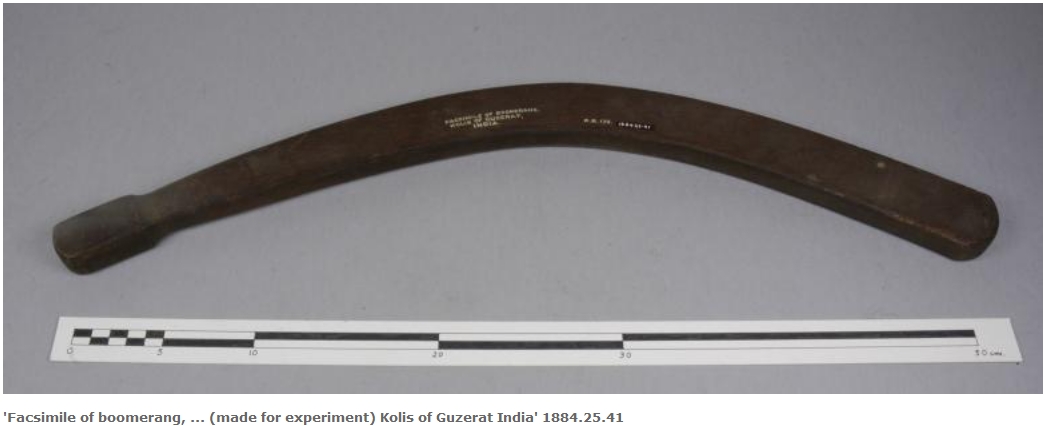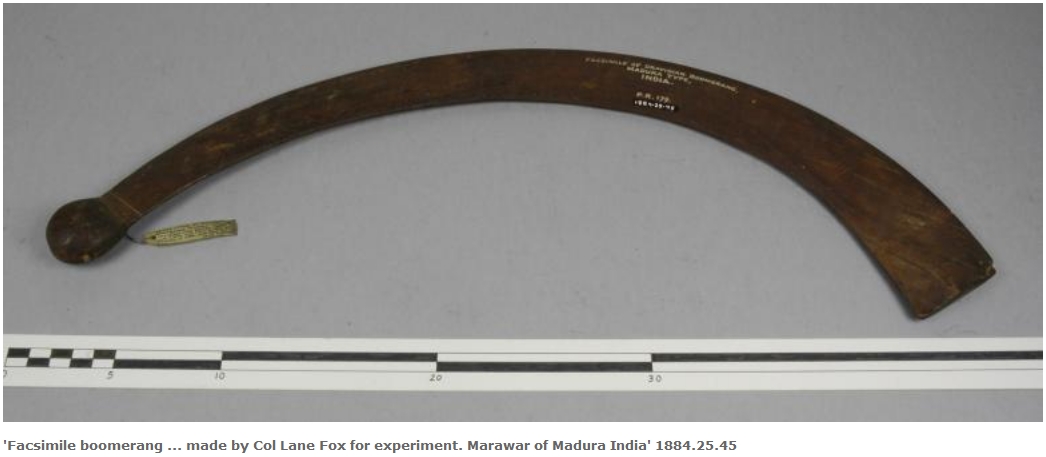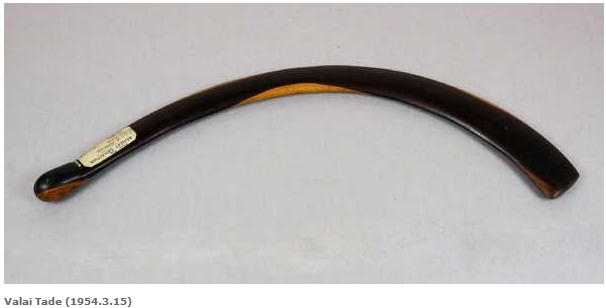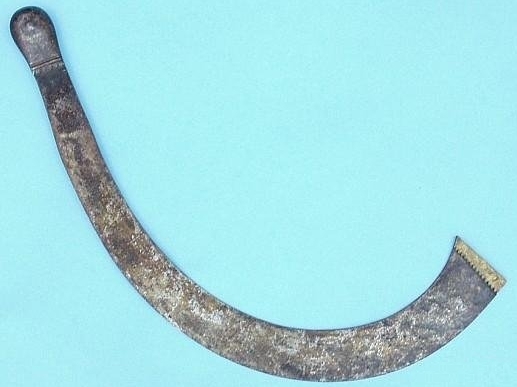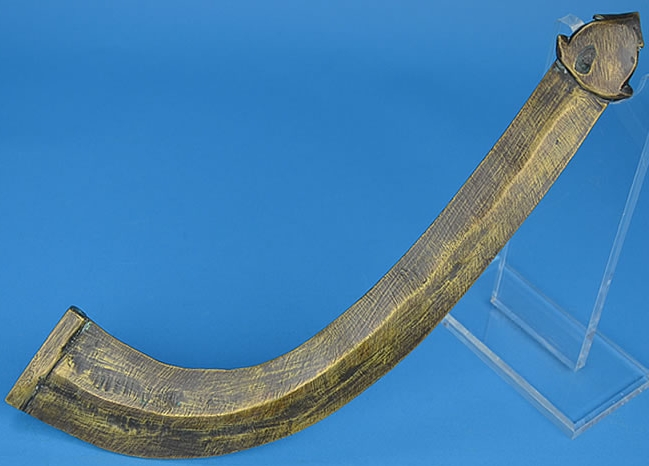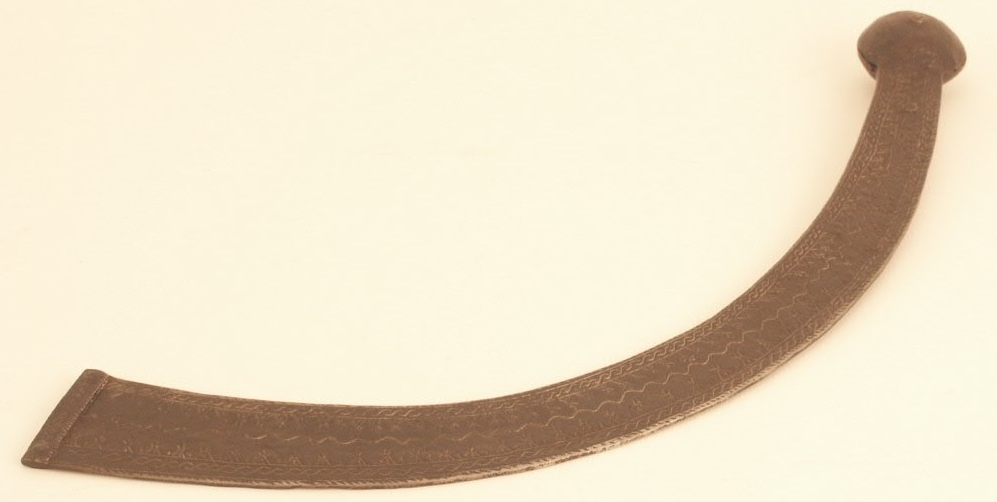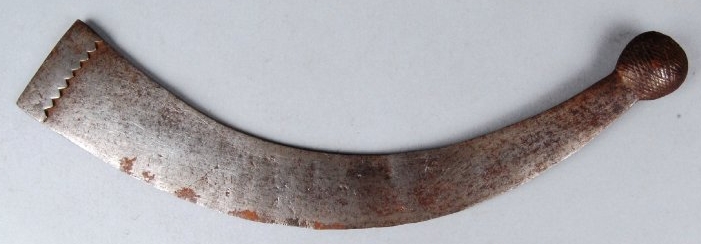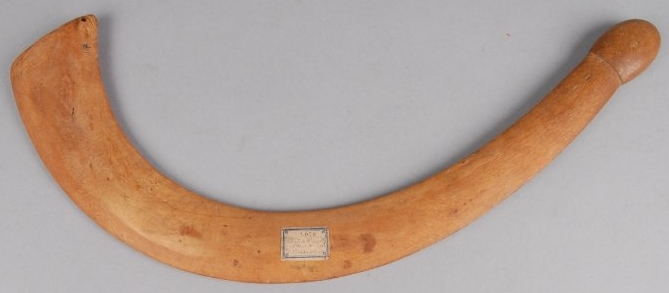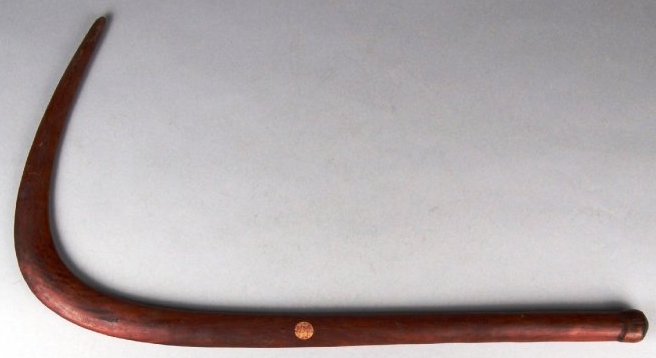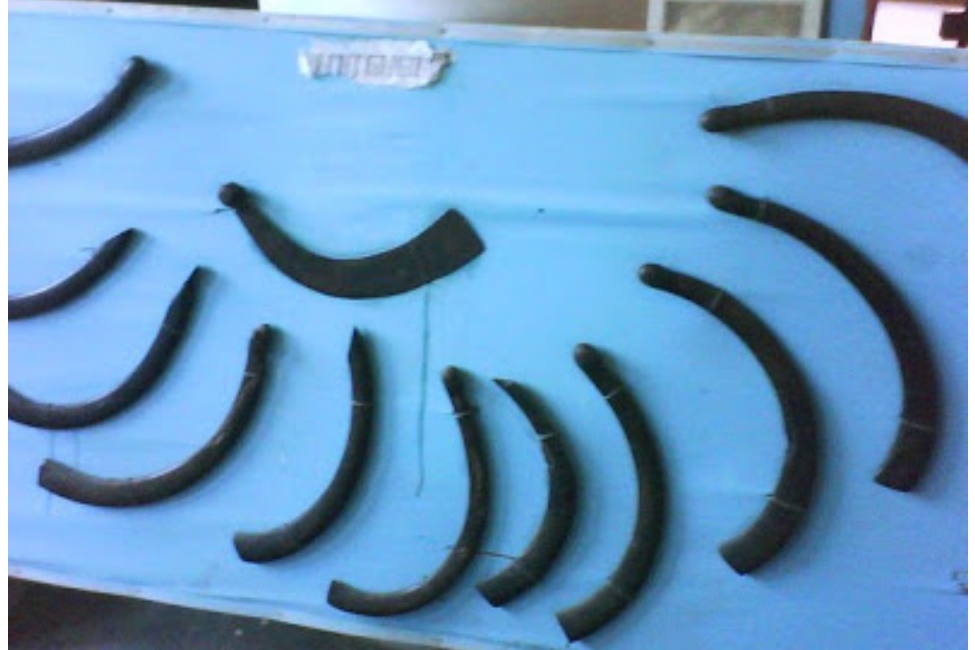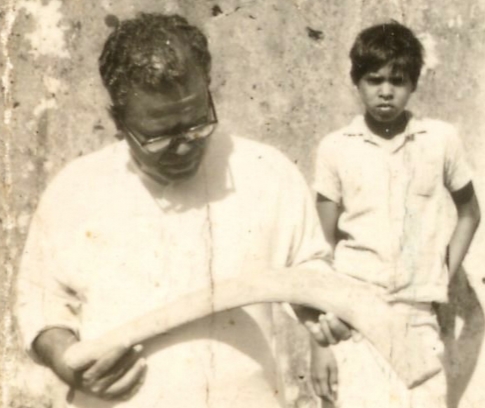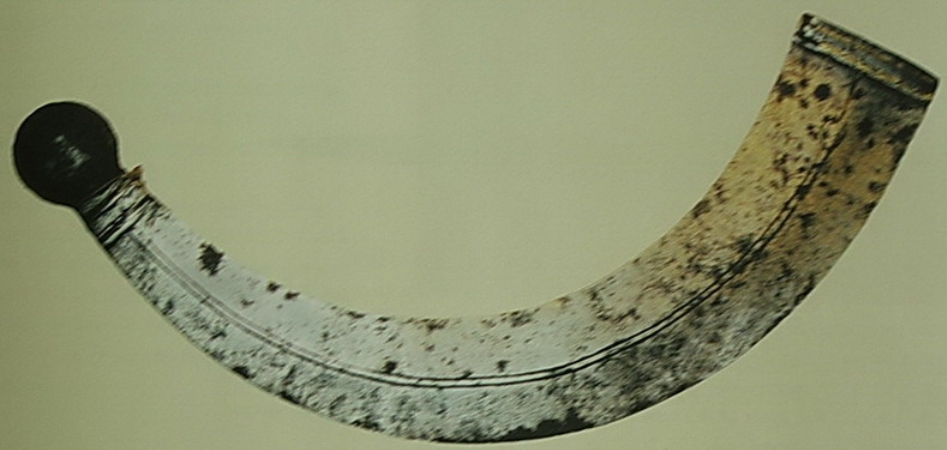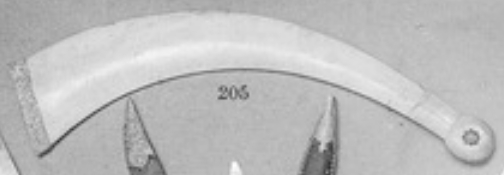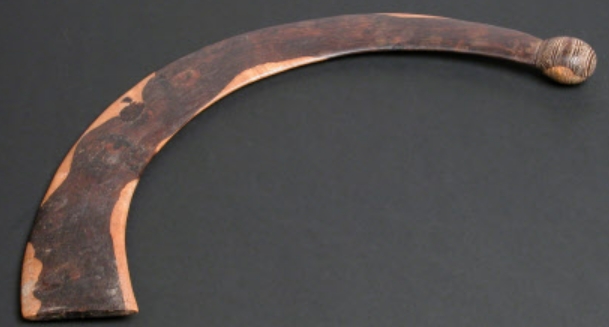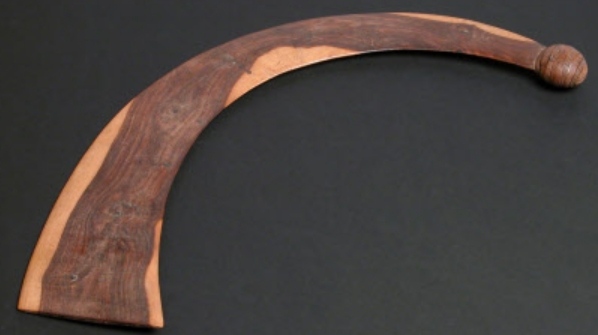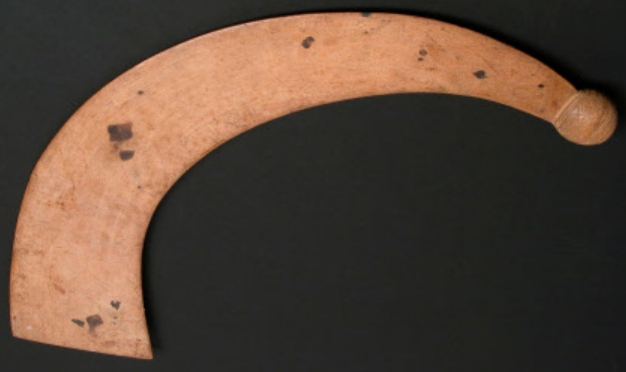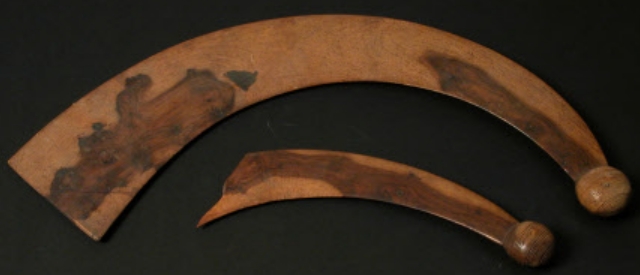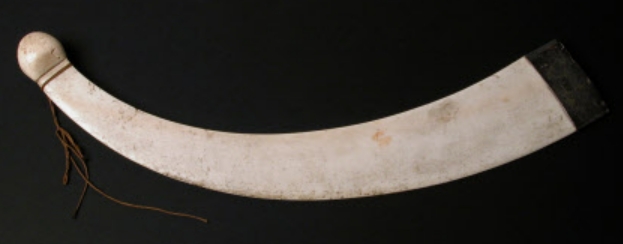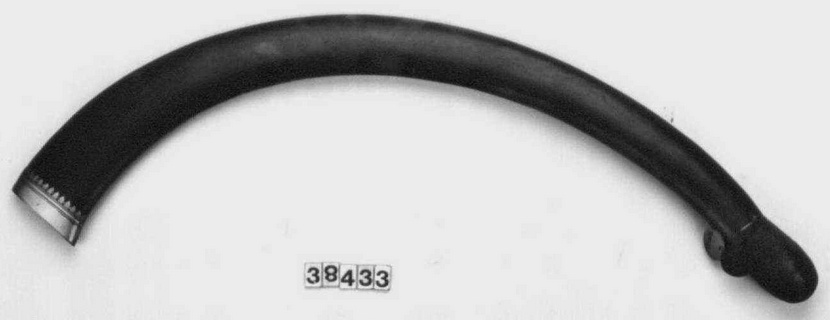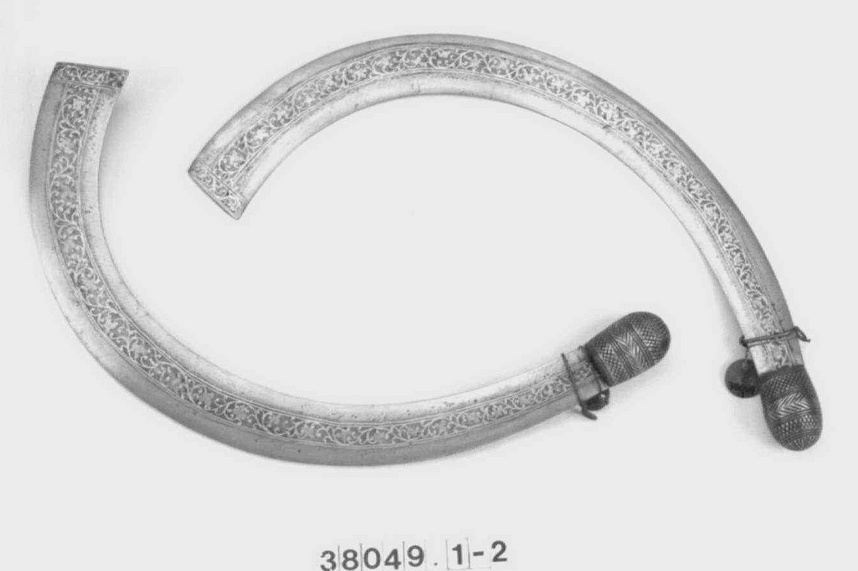Traditional boomerangs in India
I had taken for granted that boomerangs were used in India.
But when I tried to know a bit more, I found only the same sentences repeated everywhere on the Internet.
So, I searched the Web more seriously … and gathered here every photo or comment about indian boomerangs. Most photos are from the British Museum, the Quai Branly Museum, the Natioanl Trust Collections, the Royal Collection Trust. The rest was found in the Higgins Collection, the Pitt Rivers Museum, a few commercial sites, blogs, forums or web pages. Comments generally come from old books found on archive.org.
I made screen copies of what was shown in my web browser when I zoomed on the interesting parts of the screen. Then I reworked slightly the resulting image (cropping, harmonizing sizes and orientations). This should not be a copyright violation (no commercial purpose, personnal research, teaching of some kind, …) and it’s a protection against the change of url that may always happen on the other web sites. Beside that some web site (ex. Quai Branly Museum) don’t even allow (bug ? or stupid policy ?) linking to their photos or web search results.
If you prefer a quick Web tour without comments you can see this video :
If you are interested in the cultural or historical aspect of the subject, you’ll be able to read the books or web sites referenced below (although the reliable information that we can gather in english on this subject can seem very “shallow”). Anyway, the interesting thing for who (like me) is ignorant about India, is the unusual quantity of new names that we can’t even associate with a vague category (tribes, castes, places, cities, persons, titles, languages, objects, historical events, …). Add to this the fact that the place names have changed and that there were various ways of transcribing names in the roman alphabet. So, even by chasing such a limited subject as “boomerangs in India”, you immediately encounter a fairly interesting quantity of unknown cultural and historical notions.
This search really began after a discussion with youtuber “Bangalorebobbel” who found an online version of“Castes and Tribes of Southern India”, Edgar Thurston, 1909.
As usual this kind of old book is to be found on archives.org, where, maybe, any such search should begin (!?) : https://archive.org/details/castestribesofso01thuriala (pdf version :
https://ia600408.us.archive.org/33/items/castestribesofso03thuruoft/castestribesofso03thuruoft.pdf).
In that document, page 66, 70, 84/85, boomerangs are said to be a typical weapon of the Kallars/Kallan and Maravans (castes / tribes of the Tamil people in South India). Those boomerangs were made of wood, ivory, metal. The name of the weapon is written as “valai tadi” / “valari tadi” / “vellari thadi” / “vallari thadi” and is said to mean “bent stick”. Page 77, 78 is mentioned a tradition : exchange of boomerangs between bride and bridegroom.
Associated place names : Madura, Madras [now Chennai] Museum, Pudukkottai, Tanjore [now Thanjavur] Armoury.
Actually this text partly comes from “Ethnographic notes in southern India : with 40 plates”, Edgar Turston, 1906; where a chapter is dedicated to boomerangs (page 555 to 559 ?? / 645 to 649) and a plate (XXXVII, page 556) with 2 boomerangs.
plate : https://archive.org/stream/cu31924023651023#page/n648/mode/1up
 (I separated the image in two parts)
(I separated the image in two parts)
text : https://archive.org/stream/cu31924023651023#page/n645/mode/2up
This text also states that the Koli tribe of Guzerat [Gujarat, North Western India] used boomerangs. We can doubt that the author ever saw himself an indian boomerang as every assertion is attributed to other authors or personnalities or books : Mr Savile Kent citing Mr Balfour, General Pitt Rivers [ex Lane-Fox], Prof. E.C. Stirling, Egerton’s “Indian and Oriental Armour”, Dr G. Oppert citing the Dewan of Pudukkottai, Mr R. Bruce Foot, G.F. Dr Penha.
Egerton’s “Indian and Oriental Armour” should contain some information about indian boomerangs, but it is unexpoitable on archive.org which refers to googlebooks where (as usual) there is no means to read the thing normally.
About Pitt Rivers / Lane-Fox, an interesting article describing his experiments on boomerangs can be read on ths Pitt Rivers Museum Web site, at http://england.prm.ox.ac.uk/englishness-PR-and-Boomerang-technology.html . We learn that Pitt Rivers made several facsimile of Egyptian and Indian boomerangs seen in museums and that he successfully trained himself to throw them [so, this obsession about boomerangs is at least 230 years old in the west, may be more 🙂 ]. These are the 2 facsimile of indian boomerang shown on the Web site (the egyptian one is beautiful also, but not given below) :
I can find only another boomerang photo (a ceremonial throwing stick, Madurai, Tamil Nadu) on Pitt Rivers Museum web site :
Chennai Museum Web Site only shows a bad quality photo of 2 apparently indian boomerangs but, strangely, the associated commentary is about australian Aborigines (although the comment is not very clear).
 |
| See this page, which also mentions the Khonds of Orissa without alluding to boomerangs :http://www.chennaimuseum.org/draft/gallery/02/02/ethnolg2.htm |
In “The races of Man : an outline of anthropology and ethnography”, Deniker, 1904 we read that boomerangs named “Singa” are attributed to the Khonds of Orissa [now Odisha, Eastern India] :
https://archive.org/stream/racesofmanoutlin00deniuoft#page/258/mode/2up
In “A study of traditionnal throwing sticks and boomerang tuning”, Luc Bordes makes an analysis of the shapes and profiles of 5 Indian boomerangs (Valai thadi series of 5 boomerangs from Tamil Nadu) found in the Quai Branly Museum, Paris. See page 6 “a remarkable Indian Valari series” inhttp://revedeboomerang.free.fr/tuning2.pdf ; figure 12a is reproduced below :
Elsewhere, on http://revedeboomerang.free.fr/inde.html andhttp://revedeboomerang.free.fr/planisphere.jpg we find other photos of unknow origin, one is said to represent a Katariya / Katurea (from Gujarat), another represents some Valari and an australian-looking boomerang said to be from Southern India, Tamil Nadu.
After verification… the first image comes from http://www.oriental-arms.co.il/item.php?id=558 (a sold item)
Another of the same type of “Katariya”, made of brass, is shown on http://akaalarms.com/sold-very-rare-18th-century-indian-boomerang-ref-10327/
The comments let me wonder if it’s a good idea to believe everything … they seem to be like me : gathering information from every source… I would make every confusion between Katariya and Valari or Gujarat and Tamil Nadu when reading : “A very rare 18th Century Indian boomerang, traditionally used by the tribes of Gujerat and South India to hunt small animals, and protect livestock from predators. There are various names attributed to these items, Elgood* calls it a ‘Birundungi’ (referring to the South Indian variant); and Lord Egerton**, a ‘Katariya’ (referring to a boomerang used by Koles – a tribe of Gujerat). A lesser known source, Edgar Thurston*** provides some compelling research and calls it a ‘Valari’ or ‘Valai-Tadi’, referring to examples in the Tanjore Museum.”
Another similar object, 30 cm long, steel, called Birundungi, said to be from South India is shown onhttp://akaalarms.com/sold-south-indian-steel-boomerang-known-as-a-birundungi-ref-10082/
Another “Katariya” from the Higgins Collection http://www.higgins-collection.org/artifacts/3485
18 1/4″ O.L. 14 oz – Katariya, Gujarat, iron
I first found mention of the Quai Branly collection on this page :
http://www.ashokaarts.com/shop/extremely-rare-tamil-valari-or-birudungi-wooden-war-boomerang-19th-century where they show another Valari :
profile and upper face
Extracts of the comment : “[…] its more common steel form it is known as Singa, it has various names in southern languages: Valari (Tamil), Katariya (Khol), Birra Jungee/Birudungi (Hyderabad), Vălaytădi (malayalam). […] Similar examples can be seen in the British Museum, Quai Branly, Fitzwilliam and Liverpool Museum amongst others.”
I found nothing about boomerangs on the Liverpool Museum Web site.
About the Fitzwilliam museum, I was not able to find any photo and their search tool is not very efficient compared to others… it’s beeing replaced… so … we can at least find a few verbal descriptions for 2 south indian boomerangs donated by a man named Robert Taylor in 1879 :
http://webapps.fitzmuseum.cam.ac.uk/explorer/index.php?qu=robert%20taylor&oid=160097
length: 47.5 cm ; weight: 140 g ;
http://webapps.fitzmuseum.cam.ac.uk/explorer/index.php?qu=robert%20taylor&oid=160096
length, 46 cm , weight, 250 g [shorter but heavier]
Quai Branly Museum has a few wooden boomerang not shown to the public, but with photos on their Web Site : http://collections.quaibranly.fr/#71ea5d81-50c8-4054-a2c2-e1fcc19880b7
(searching for “boomerang inde” we find 4 results, all from South India, Tamil Nadu, Gasivaganga)
N° 71.1939.85.69 – 16 x 50,5 x 2,7 cm, 114 g
N° 71.1939.85.66 – 14 x 48,5 x 2,8 cm, 269 g
N° 71.1939.85.67 – 17 x 46,5 x 3 cm, 202 g
N° 71.1939.85.68 – 48 x 15 x 2,5 cm, 182 g
knobs
searching for “bâton de jet”, we find 2 more boomerangs from India
http://collections.quaibranly.fr/#15e6b86d-c5d8-4982-9b00-ec0a2511ce1e
N° 71.1954.21.19 D – 50,5 x 18 x 3,1 cm, 250 g
N° 71.1950.86.2 – 47 x 14 x 3 cm, 309 g
[can’t be flat, if the data is correct, by comparison with the other boomerangs]
The british Museum also has some boomerangs from india. Searching for india+boomerang gives 6 results, all named “Valari”, one being strange in shape (and doesn’t seem to be able to fly).
http://www.britishmuseum.org/research/collection_online/search.aspx?searchText=india+boomerang
metal valari from Madurai (?) 34cm x 5.5 cm; 219 g
wooden (mimosa) valari from south india 47cm x 6.8 cm, 159 g
valari, indian club, from industan (?) 62 cm x 32.5 cm x 3.1 cm ; 480 g [probably not flat and unable to fly]
Searching for “india throwing stick” http://www.britishmuseum.org/research/collection_online/search.aspx?searchText=india+throwing+stick we find one more boomerang (in shape), this time it is said to have been made by Gond (said to be one of the most diffused tribe in India) but by the shape, it seems to be simply one more valari from south India (with a missing broken angle).
6.1 cm, 44.6 cm, 0.2 cm, 0.2 g [the alleged dimensions are clearly false]
Searching for “collery stick” (“collery” comes from Kallar)http://www.britishmuseum.org/research/collection_online/search.aspx?searchText=collery+stick we find one more southern indian Valari. This one related to : Thanjavur (city, formerly Tanjore), Maravar (Tamil tribe).
49.5 cm x 6.2 cm; 207 g
Little more information on the collery-stick / valari that had known James Welsh, on the Web pagehttp://www.sivagangaiseemai.com/maruthupandiyar/maruthu-pandiyar-history6.html# (about the history of Maruthu / Marudhu / Mardoo brothers once rulers of Sivagangai) The text seems to replicate parts of James Welsh’s text without always saying it, so it’s not very clear where the information comes from).
We can guess that most of those valaris are only slightly flattened : except the one in the center ; they may have been unable to really fly. 4 are broken in a way that let think they were not perfectly cut along the grain of the wood. Maybe because, for handiness, the knob had to diverge slightly from the overall curve.
On http://tamilnation.co/heritage/weapon.htm we find another article about boomerangs used by the Tamils (but no source is cited) : “Valari – An Unique Weapon of the Tamils”. The url “tamilnation.co” is said to replace temporarily “tamilnation.org”, so be sure to go there when this url doesn’t work anymore. And there is an image of a valari that is said to have been found in Thondi (city, port, in Ramanathapuram District, Tamil Nadu). Associated person names : Dr Jeyachandrun (the man who holds the valari in the photo), Dr Jayabarathi (the author of the article)
On http://vikingsword.com/vb/showthread.php?p=56083 we find two photos. The first one is of a metal boomerang, from the book of Robert Elgood (2004) “Hindu Arms and Ritual: Arms and Armour from India 1400-1865” where it is said to be on page 191 (also said : more boomerang from India to be seen on page 193 ; the author states that there are 6 types of boomerangs in India – [can’t verify that, this book is to recent to be freely read online] ).
A few more boomerangs found by searching “throwing weapons” in the National Trust Collections (after having seen photos and detailed comment on Pinterest) http://www.nationaltrustcollections.org.uk/search/1?show=100
http://www.nationaltrustcollections.org.uk/object/1180707.1 calamander wood, 44 cm
http://www.nationaltrustcollections.org.uk/object/1180707.2 calamander wood, 41 cm
http://www.nationaltrustcollections.org.uk/object/1183944, calamander wood, 49.6 cm
http://www.nationaltrustcollections.org.uk/object/1183941, calamander wood, 49.2 cm
http://www.nationaltrustcollections.org.uk/object/1180697, ivory and silver, 48.5 cm
“The Evolution of Culture and Other Essays”, Pitt-Rivers, Augustus Henry Lane-Fox, 1906
extract from http://www.gutenberg.org/files/44844/44844-h/images/zill_t142g_plate15h.png
Plate XV, diagram 6, Indian Boomerangs
There may have been an interesting collection of Indian boomerangs at the Pitt-Rivers Museum in 1946; Large enough to deserve a catalog (?), from what we may infer from “Sir Francis made a valuable catalogue of our Indian boomerangs” (see the annual report of the curator of the Pitt Rivers Museum, in 1946,http://web.prm.ox.ac.uk/sma/index.php/museum-annual-reports/246-1945-46-annual-report.html )
From the Royal collection Web site : http://www.royalcollection.org.uk/collection-search/boomerangs
46.8 x 5.2 x 2.5 cm, rosewood, blades shod in silver, heavy knobs
Presented by H.H. The Rani of Shivaganga, Mysore
49.3 x 15.2 cm, rosewood, flat blade, iron band, heavy knob
Presented by H.H. the Rani of Shivaganga, Mysore
48 x 15 cm, rosewood, flat blade, iron band, heavy knob
Presented by H.H. the Rani of Shivaganga, Mysore
Singhá, 44.2 x 14.5 cm, flat [?? doesn’t seem so] steel blade, heavy knob
Presented by H.H. the Rani of Shivaganga, Mysore
Singhá, 44.0 x 14.6 cm, flat [?? doesn’t seem so] steel blade, heavy knob
Presented by H.H. the Rani of Shivaganga, Mysore
38.8 x 15.5 cm, flat steel blade, heavy knob
Presented by H.H. the Rani of Shivaganga, Mysore
Singa, 39.5 cm, flat blade, heavy knob
Presented by H.H. the Rani of Shivaganga, Mysore
43.3 x 17.0 cm, flat steel blade, heavy knob, N° 38589
Presented by H.H. the Rani of Shivaganga, Mysore
46.0 x 5.2 x 2.9 cm, flat rosewood blades, heavy knobs, N° 38129
Presented by H.H. the Rani of Shivaganga, Mysore
2 Singá, 34.8 x 14.8 x 2.4 cm, silver-damascened steel, flat blades, heavy knobs
Presented by H.H. the Rani of Shivaganga, Mysore
45.7 x 6.4 x 3.2 cm, ivory boomerang, each side slightly convex
Presented by Ramachandra Tondaiman, Raja of Pudukkottai.
54.2 x 10.6 x 2.1 cm, ivory, slightly convex surfaces, tapering to flat rounded pommel,
fitted with band mount at wide end
Presented by Ramachandra Tondaiman, Raja of Pudukkottai.
36.4 x 4.8 x 2.6 cm, coloured ivory with strong grain, silver and lacquer
“Handbook to the ethnographical collections”, British Museum, 1910. Found on archive.org : https://archive.org/stream/handbooktoethnog00brituoft#page/48/mode/2up
The Rough Guide to South India, https://books.google.fr/books?id=sEhJBfbhTAAC, page 513
[…]
That is probably related to the mayadevar blog entry seen earlier.
The Hindu, April 22, 2012



